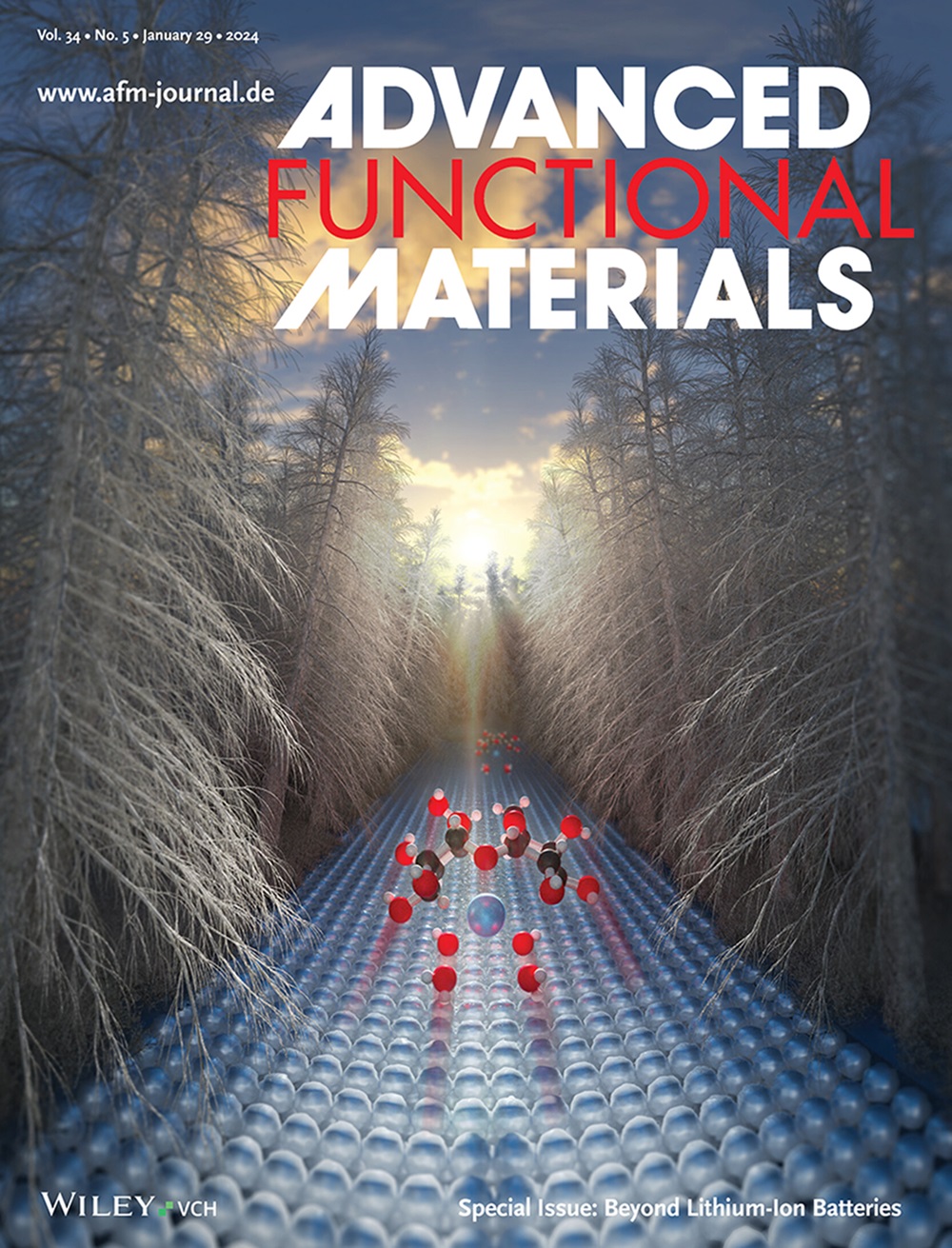自嵌入肖特基结在液态金属衍生的二维氧化物中用于快速和选择性室温H2传感
IF 19
1区 材料科学
Q1 CHEMISTRY, MULTIDISCIPLINARY
引用次数: 0
摘要
基于半导体的氢传感器为安全和循环氢经济提供了经济高效的解决方案。液态金属衍生的二维金属氧化物有望成为超薄传感材料。然而,传统的剥离不可避免地引入金属驻留,这些驻留通常在合成后被去除。在这里,残余的铟纳米岛被策略性地保留在退火的2D超薄In2O3层中,形成自嵌入的肖特基结。这种独特的结构增强了In/In2O3界面的气固耦合。调整铟纳米岛的组成和空间分布可以放大热离子电子穿过肖特基势垒的发射。该传感器实现了室温氢气检测,快速响应时间为4.4 s,高传感器响应为3.4,对常见干扰的选择性为>;2.5。值得注意的是,6周后的性能偏差仅为6.7%,具有良好的抗湿性。这些优点强调了材料和方法的潜力,以解决开发室温高性能氢传感器的艰巨挑战。本文章由计算机程序翻译,如有差异,请以英文原文为准。

Self-Embedded Schottky Junctions in Liquid-Metal-Derived 2D Oxides for Fast and Selective Room-Temperature H2 Sensing
Semiconductor-based hydrogen sensors provide cost-efficient solutions for safety and a circular hydrogen-based economy. Liquid metal-derived 2D metal oxides show promise as ultrathin sensing materials. However, conventional exfoliation inevitably introduces metallic resides, which are often removed post-synthesis. Here the residual indium nano-islands are strategically retained within annealed 2D ultrathin In2O3 layers, creating self-embedded Schottky junctions. This unique architecture enhances gas-solid coupling at In/In2O3 interfaces. Tuning the composition and spatial distribution of the indium nano-islands amplifies the thermionic electron emission across the Schottky barriers. The resulting sensor achieves room-temperature hydrogen detection with a rapid response time of 4.4 s, high sensor response of 3.4, and >2.5 selectivity against common interferents. Remarkably, it exhibits only a 6.7% performance deviation after 6 weeks and shows good humidity resistance. These merits underscore the potential of the material and method for addressing the formidable challenge in developing room-temperature high-performance hydrogen sensors.
求助全文
通过发布文献求助,成功后即可免费获取论文全文。
去求助
来源期刊

Advanced Functional Materials
工程技术-材料科学:综合
CiteScore
29.50
自引率
4.20%
发文量
2086
审稿时长
2.1 months
期刊介绍:
Firmly established as a top-tier materials science journal, Advanced Functional Materials reports breakthrough research in all aspects of materials science, including nanotechnology, chemistry, physics, and biology every week.
Advanced Functional Materials is known for its rapid and fair peer review, quality content, and high impact, making it the first choice of the international materials science community.
 求助内容:
求助内容: 应助结果提醒方式:
应助结果提醒方式:


